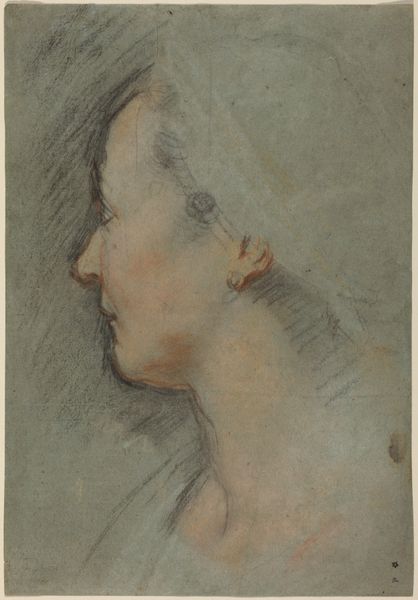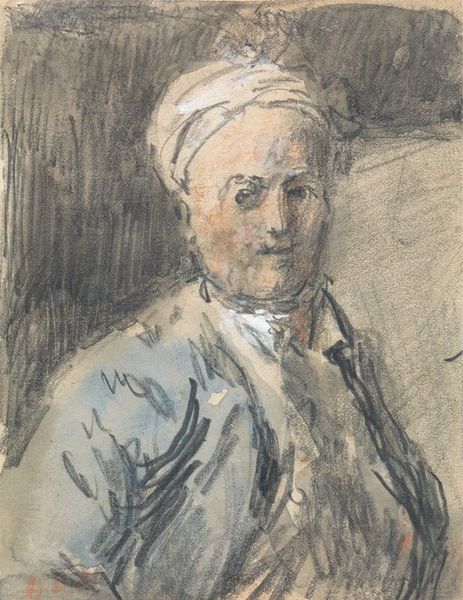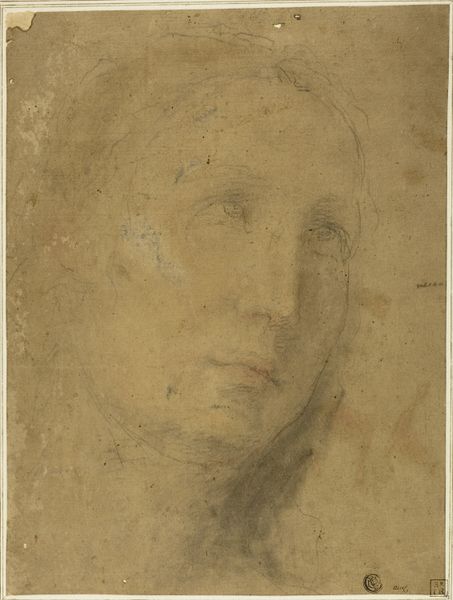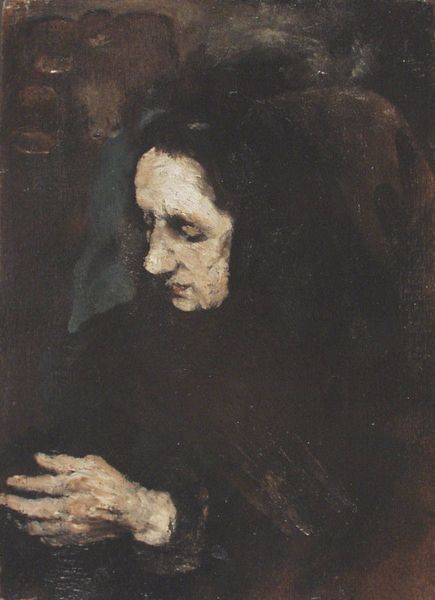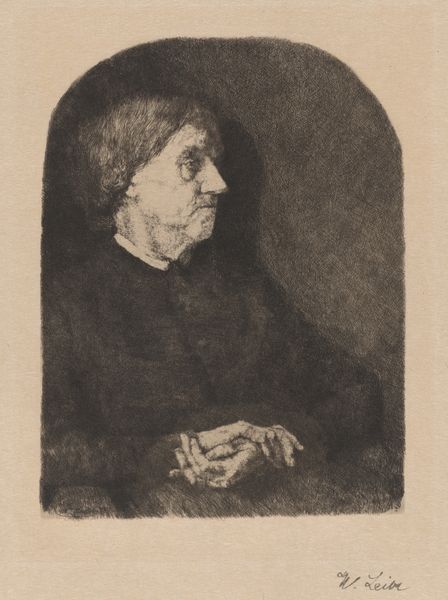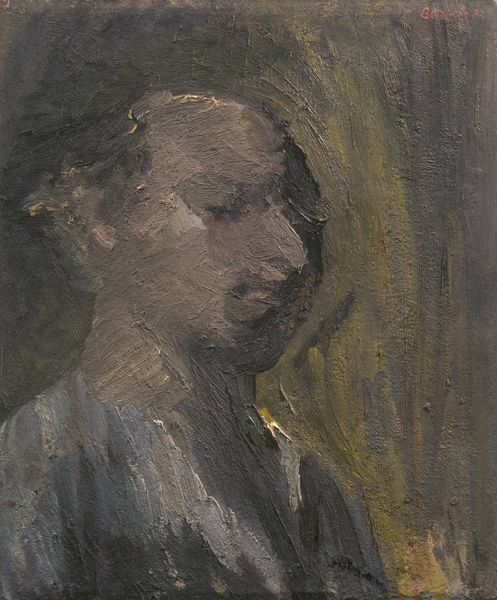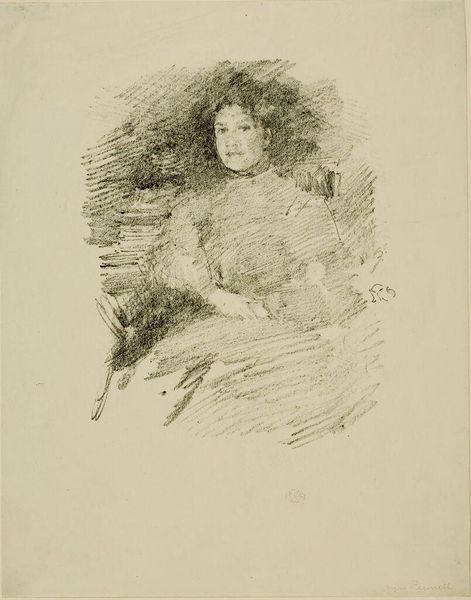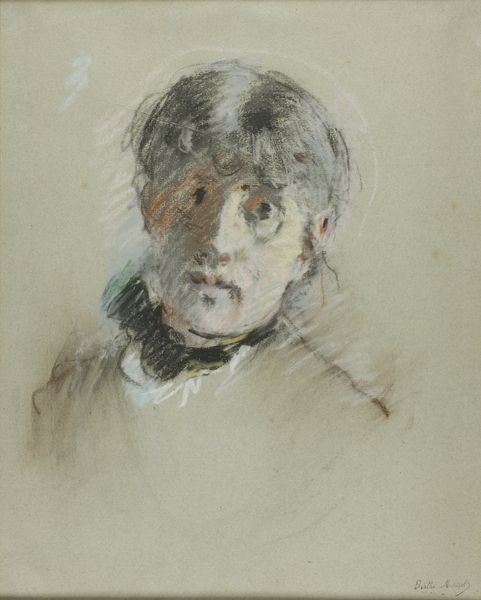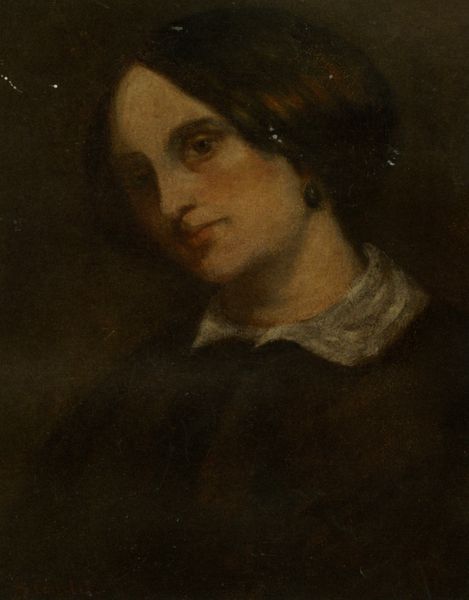
painting, oil-paint, impasto
#
portrait
#
figurative
#
painting
#
oil-paint
#
charcoal drawing
#
figuration
#
oil painting
#
impasto
#
romanticism
Copyright: Public Domain: Artvee
Editor: So here we have "Amouk, after Goya," by Hercules Brabazon Brabazon, presumably an oil painting given the medium's impasto texture. The subject is shrouded in darkness, yet the face is rendered with thick, almost crude, strokes. I find it incredibly powerful in its simplicity. What do you see in this piece from your perspective? Curator: It’s intriguing to consider this work through a materialist lens, particularly the act of *copying* Goya. Brabazon, a privileged amateur, is engaging with the ‘aura’ of a master, but crucially, the labor here is vastly different from Goya’s. Consider the social implications – the availability of materials, the very act of leisure allowing Brabazon to pursue painting as a hobby, while Goya’s practice was tied to commissions and a different societal position. What does this difference in production mean for the final product? Editor: That's fascinating! So you're suggesting the context of production deeply informs how we view the work, even beyond the visual elements? It’s not just a portrait, it's about who *made* the portrait, and *why*? Curator: Precisely. Look at the impasto – that layering of paint isn't just a stylistic choice; it's evidence of a physical act, of Brabazon's hand and body at work. How does that physicality connect, or disconnect, with Goya’s original intent and the materials available to him? Was Goya making strategic decisions due to limited resources? The texture may speak to the consumption of paint in this time, which Brabazon would have had greater access to. Editor: So, it’s not just about aesthetic homage, but about the societal circumstances of artistic creation and even consumption. It almost demystifies the 'genius' of Goya by showing us another set of hands attempting it with varying resources. I’ll definitely look at copies differently from now on. Thanks for opening up my perspective. Curator: Absolutely! It reveals the socio-economic networks inherent in all artistic practices, highlighting labor, materials, and consumption rather than pure aesthetic interpretation.
Comments
No comments
Be the first to comment and join the conversation on the ultimate creative platform.
